Craft Beer-Cerveza Artesanal
Trabaje durante 7 años en una fábrica de cerveza artesanal reconocida, sus estilos de cerveza eran estilos internacionales por ello hoy vengo hablarte de ese mundo fantástico desde la siembra de sus ingredientes hasta la fabricación de esta bebida tan relajante y enigmática, te mostrare para que puedas prepararla tú mismo así que comencemos.
I worked for 7 years in a renowned craft brewery, their beer styles were international styles so today I come to tell you about that fantastic world from the planting of its ingredients to the manufacture of this so relaxing and enigmatic drink, I will show you so you can prepare it yourself so let's start.
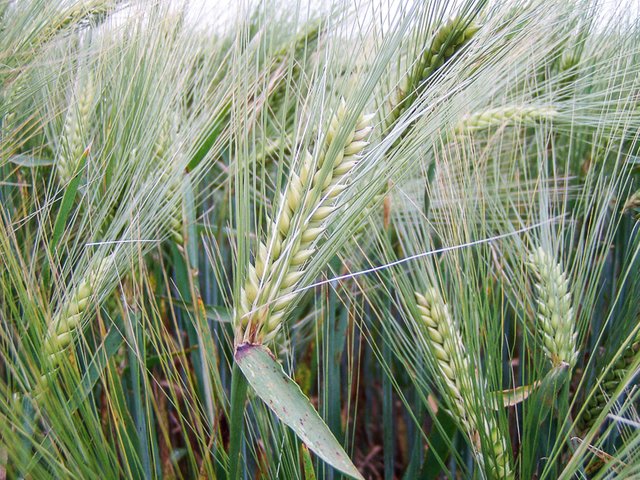
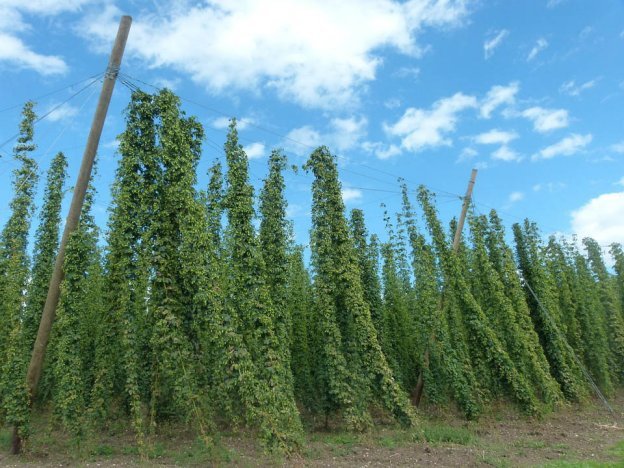
Al ingresar los granos de cebada a la fábrica de cerveza, se debe realizar el proceso de selección con mucha cautela donde cada uno de los granos deben presentar uniformidad y características similares de esto dependerá la calidad del producto terminado.
When the barley grains enter the brewery, the selection process must be carried out with great care, where each of the grains must have uniformity and similar characteristics, which will determine the quality of the finished product.
Así mismo procedemos a remojar los granos a unos 15°C oxigenando el agua así de esta manera los granos no se ahogan una vez hecho esto el agua es retirada y se dejan reposar los granos tres días.
We then proceed to soak the barley grains at 15°C, oxygenating the water so that the barley grains do not drown. Once this is done, the water is removed and the barley grains are left to rest for three days.
Llegamos al proceso de germinación donde al grano procede a romperse o brotarse antes de la aparición de su raíz, donde el grano libera enzimas (almidón de azúcar), debe removerse constantemente para que la liberación de los azucares del grano sea uniforme en todos los granos, justo después de este momento controlamos este proceso y realizamos su interrupción, y procedemos a realizar el secado del grano este variará dependiendo del estilo de cerveza que deseas realizar siendo este un paso muy importante aquí obtendrás los aromas, sabores y color de la cerveza, se realiza en hornos a temperaturas controladas por encima de los 200 grados buscando desprender las raíces del grano sin que afecte los enzimas obtenidos, dependiendo del tiempo de malteado obtendremos maltas oscuras o claras.
We arrive at the germination process where the grain proceeds to break or sprout before the appearance of its root, where the grain releases enzymes (sugar starch), it must be constantly stirred so that the release of sugars from the grain is uniform in all grains, just after this moment we control this process and perform its interruption, and we proceed to dry the grain, this will vary depending on the style of beer you want to make, being this a very important step here you will obtain the aromas, flavors and color of the beer, it is done in ovens at controlled temperatures above 200 degrees seeking to detach the roots of the grain without affecting the enzymes obtained, depending on the time of malting we will obtain dark or light malts.
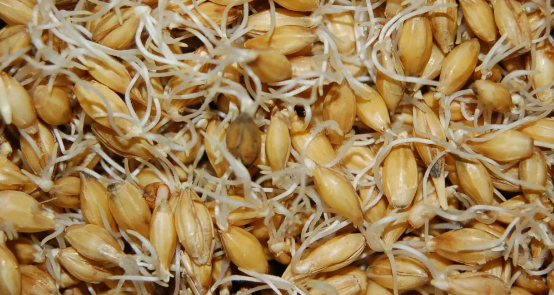
Una vez obtenida la malta que deseamos es hora de moler los granos, con el objetivo de obtener una especie de harina la cual vamos a mezclar con agua, este último ingrediente constituye el 90% de la cerveza, y a esta mezcla se le conoce como mosto cervecero.
Once the desired malt is obtained, it is time to grind the grains in order to obtain a kind of flour which we will mix with water, this last ingredient constitutes 90% of the beer, and this mixture is known as brewer's wort.

En la maceración se utilizan diferentes temperaturas entre 62°C y 72°C, se remueve constantemente la mezcla hasta tener una especie de textura o pasta consistente. Este proceso se realiza con el objetivo de obtener los azucares fermentables, tiene la duración de una hora aproximadamente este proceso.
The maceration process uses different temperatures between 62°C and 72°C. The mixture is constantly stirred until it has a consistent texture or paste. This process is carried out with the objective of obtaining the fermentable sugars, and lasts approximately one hour.
Finalmente separamos el líquido del mosto de la malta, o el líquido del sólido, a este último se le conoce como bagazo y es utilizado como alimento para los animales. En las grandes industrias cerveceras se utiliza una maquina llamada cuba de filtración. Si lo haces en casa utiliza un colador y hazlo despacio y con mucho cuidado todos comenzamos haciendo nuestras primeras prácticas en casa.
Finally we separate the liquid from the malt wort, or the liquid from the solid, the latter is known as bagasse and is used as animal feed. In large breweries a machine called a lauter tun is used. If you do it at home, use a strainer and do it slowly and carefully, we all start doing our first practices at home.
En este proceso el mosto alcanza el estado de ebullición, en el cual todo el líquido alcanza la misma temperatura, se añade el lúpulo el cual se encarga de aportar amargor y aroma, este proceso suele durar una hora pero dependiendo del estilo de cerveza que realices suele durar entre 3 o 4 horas, aquí se destruyen microorganismo y olores o aromas indeseables y se conservan las sustancias nutritivas. El mosto final es sometido a un centrifugado, donde la sedimentación originada por proteínas, hojas de lúpulo se acumula en el centro de la olla de cocción y evita una suspensión en el líquido.
In this process the wort reaches the boiling state, in which all the liquid reaches the same temperature, the hops are added which is responsible for providing bitterness and aroma, this process usually lasts an hour but depending on the style of beer you make usually lasts between 3 or 4 hours, here microorganisms and undesirable odors or aromas are destroyed and nutrients are preserved. The final wort is centrifuged, is where the sedimentation caused by proteins and hop leaves accumulates in the center of the pot and prevents a suspension in the liquid.
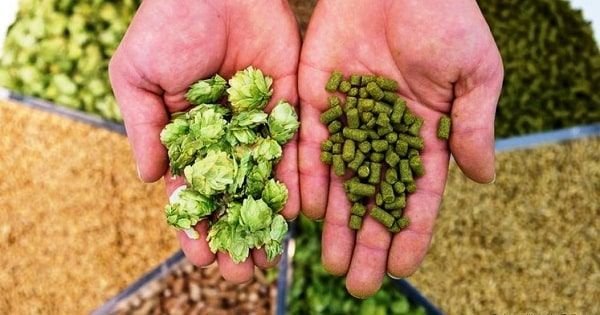
A llegado el momento de enfriar el mosto y agregar la levadura dependiendo del tipo de cerveza existen dos familias de levaduras, como la levadura la lager en este estilo la cerveza se fermenta en temperaturas bajas entre 0° a 4° C y aporta un sabor refrescante y agradable a cualquier paladar y se presenta en el fondo del fermentador, por su parte la levadura ale es un sabor más afrutado y caramelizado y ocurre en la parte superficial del fermentador y en temperaturas altas desde 18° y 25° C, esto se realiza en tanques fermentadores, aquí la levadura transforma los azucares fermentables en alcohol y CO2, obtienes los aromas y sabores que deseas, este proceso tiene una duración entre 4 y 7 día.
It is time to cool the wort and add the yeast, depending on the type of beer there are two families of yeasts, such as lager yeast in this style the beer is fermented at low temperatures between 0° to 4° C provides a refreshing and pleasant to any palate and occurs at the bottom of the fermenter, on the other hand the ale yeast is a fruitier and caramelized flavor and occurs in the superficial part of the fermenter and in high temperatures from 18° and 25° C, this is done in fermenting tanks, here the yeast transforms the fermentable sugars into alcohol and CO2, you get the aromas and flavors you want, this process lasts between 4 and 7 days.
Durante este proceso ocurre la carbonatación de esta espectacular bebida a temperaturas entre 1° a 4°, esto es la cantidad de dioxido de carbono que caracteriza esta refrescante bebida, en este proceso se estabilizan los aromas y sabores tiene una duración de 3 o 4 días y 30 días en las grandes industrias.
During this process occurs the carbonation of this spectacular drink at temperatures between 1° to 4°, this is the amount of carbon dioxide that characterizes this refreshing drink, in this process the aromas and flavors are stabilized, it has a duration of 3 or 4 days and 30 days in large industries.
También puedes carbonatar con azúcar al realizar nuestra bebida si la haces en casa, esto se realiza con el obetivo de activar la levadura que queda viva y para que nuestra cerveza tenga su esencial e infaltable espuma.
You can also carbonate with sugar when making our drink if you make it at home, this is done with the objective of activating the yeast that remains alive and for our beer to have its essential and infallible foam.
Se procede a realizar el filtrado una vez más de la cerveza, buscando eliminar sedimentos o restos de levadura esto ayuda a mejorar su sabor y presentación.
The beer is filtered once more to eliminate sediments or yeast remains, which helps to improve its flavor and presentation.
A una temperatura de 60°C se somete las distintas presentaciones de nuestro producto con lo objetivo de eliminar microorganismo dentro del pasteurizador.
The different presentations of our product are subjected to a temperature of 60°C in order to eliminate microorganisms inside the pasteurizer.
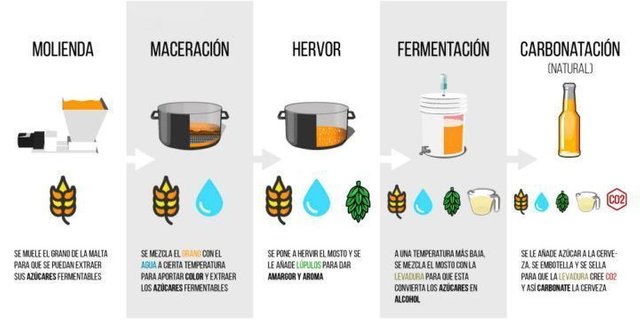
Si lo haces en casa calienta una olla de agua a 60°C y colocas las presentaciones de nuestra cerveza dentro de ella durante unos 20 minutos y luego déjalas enfriar.
If you do it at home, heat a pot of water to 60°C and place the presentations of our beer in it for about 20 minutes and then let them cool.